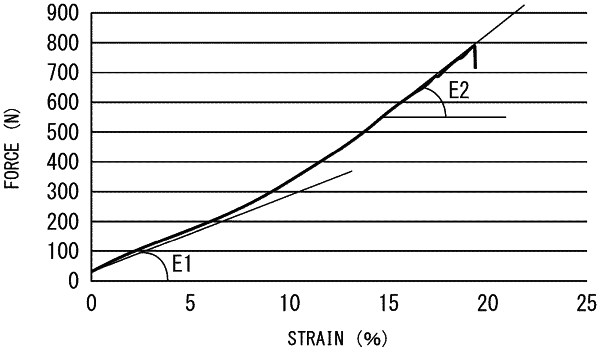|
1. A woven fabric base cloth for a material, which is composed of fibers having a yarn tenacity of 6.6 cN/dtex to 8.5 cN/dtex when dissembled from the base cloth, and in which a cloth surface is not subjected to resin coating, lamination, or a resin impregnation treatment, wherein in a force strain curve (FS) of the woven fibers obtained by Edgecomb Resistance measurement in accordance with ASTM D6479, for both warp and weft directions, in both 25° C. and 150° C. environments, E1, which is a value obtained by dividing a force amount increased in an strain range of 0.4% to 4.4% by a total cross-sectional area of fibers in the measurement direction, is 3 MPa to 25 MPa, and E2, which is a value obtained by dividing a ratio a force amount increased in an strain range of −4.8% to −0.8% from a fiber breaking point by a total cross-sectional area of fibers in the measurement direction, is 10 MPa to 30 MPa.
|
